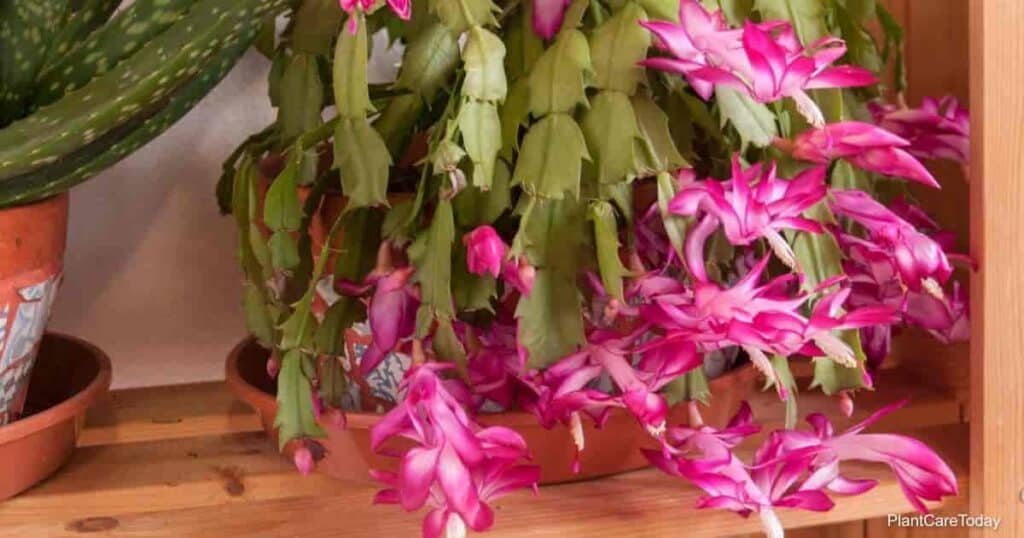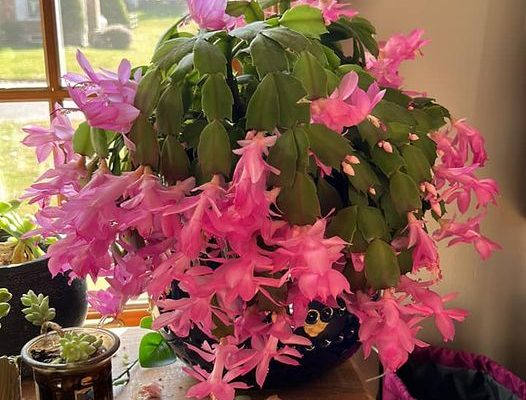Succulents have seemingly grown more popular among homeowners each year. This is because they often tolerate a bit of neglect, especially when it comes to water.
But even more surprising is how beautiful some succulents are when they bloom. A prime example of this is the Christmas cactus.
These beautiful plants produce attractive tubular blooms of lilac, pink, purple, red, or white when most other houseplants are dormant.
Despite this being an easygoing houseplant, you’ll want the best conditions for the best blooms.
The plant’s soil tends to be the most neglected aspect.
Choosing good, well-drained soil is both easy and involved, depending on how much care you plan to give your Christmas cactus.
Let’s look at the various soils you can purchase or mix at home.
Always ensure the soil is neutral to slightly acidic for the best results.
Depending on the species, your Christmas cactus will want a soil pH of 5.7 to 6.5 or 5.5 to 6.2.
You can test the soil pH by purchasing test kits if you aren’t using prepackaged soil.
Purchasing Commercial Soils
Whether you’re feeling lazy or have other cacti around the house, commercial soil is one of the fastest and easiest options.
You can use a quality general-purpose potting mix at the most basic end of the spectrum.
However, you may need to amend such soil, as these plants love soils with high organic matter.
Another option is to use a decent cactus mix.
These usually have a good mix of organic matter and aggregate, although you will still need to fertilize occasionally.
Be warned that buying cheap commercial soil increases the chance of contaminating your plant with garden pests or other health risks that weren’t properly treated before packaging.
A Cactus Soil Mix Recipe Or Mixing Your Own Soil
By far, the best option is to make your own succulent soil mix.
The most basic cactus soil mix recipe involves purchasing and pre-treating a general-purpose soil mix or harvesting some you’ve previously composted.
Mix in some bark, coarse sand, or perlite at a ratio of two parts aggregate to three parts soil.
This ensures the soil won’t hold excess water while providing plenty of nutrients.
Another method that works exceptionally well when propagating a Christmas cactus is to use an equal mix of organic matter and aggregate.
Organic matter may include compost, leaf mold, or peat.
Not only does this make for a humus-rich and nutritious mix, but it helps prevent the soil from drying out too quickly.
Meanwhile, the aggregate helps prevent the potting mix from retaining too much water.
Suitable aggregates include coarse sand, gravel, or perlite. Also, use a pot with drainage holes.
Cactus Repotting Or Replacing Soil
Remember that plants slowly drain the nutrients from the soil over time.
This is why you need to fertilize regularly.
The soil can also retain calcium, salt, and other toxins over time, making it increasingly uncomfortable for your cactus.
As a general rule, you should transplant your Christmas cactus every three years.
Use this time to completely replace the soil, discarding the old soil or mixing it into your compost pile.




